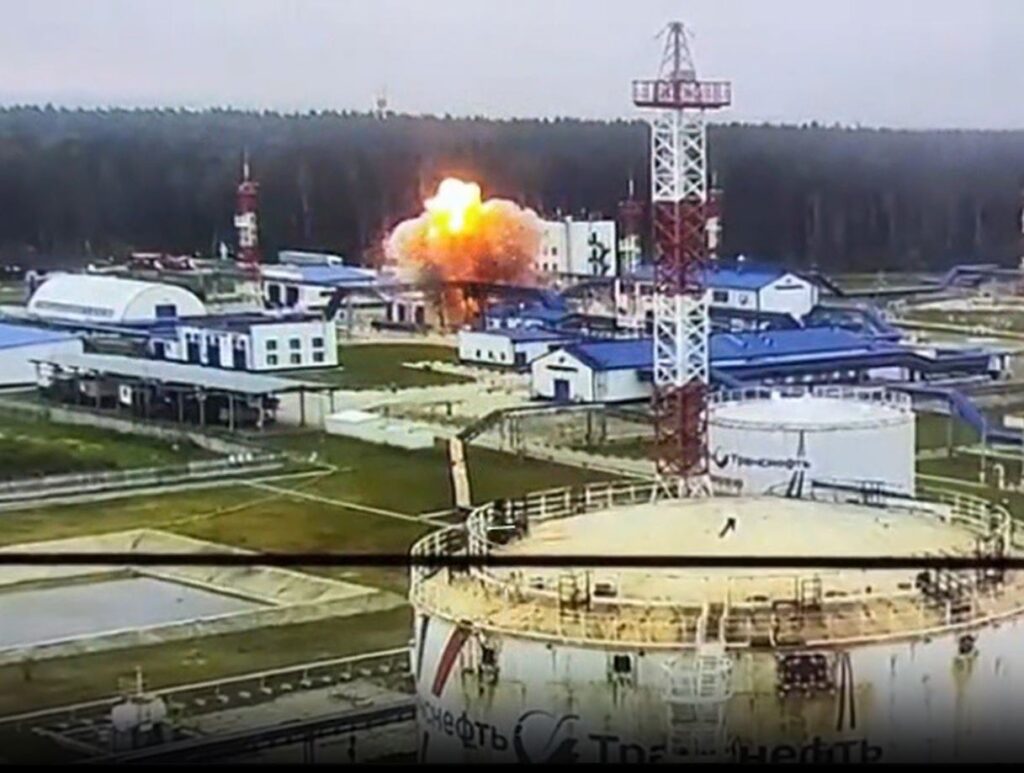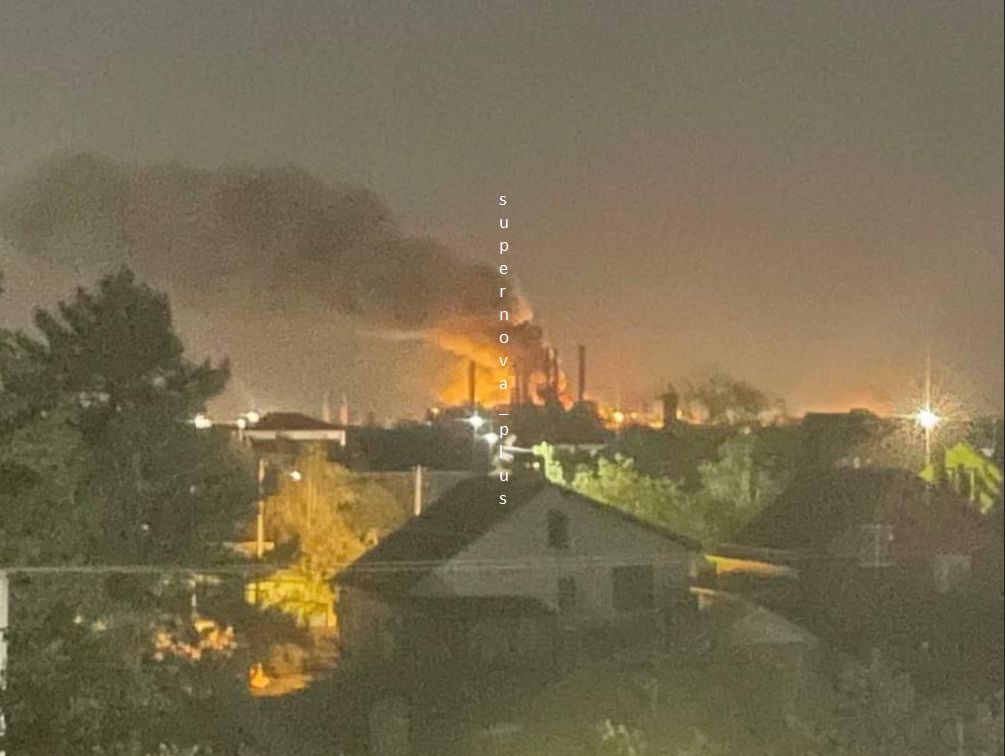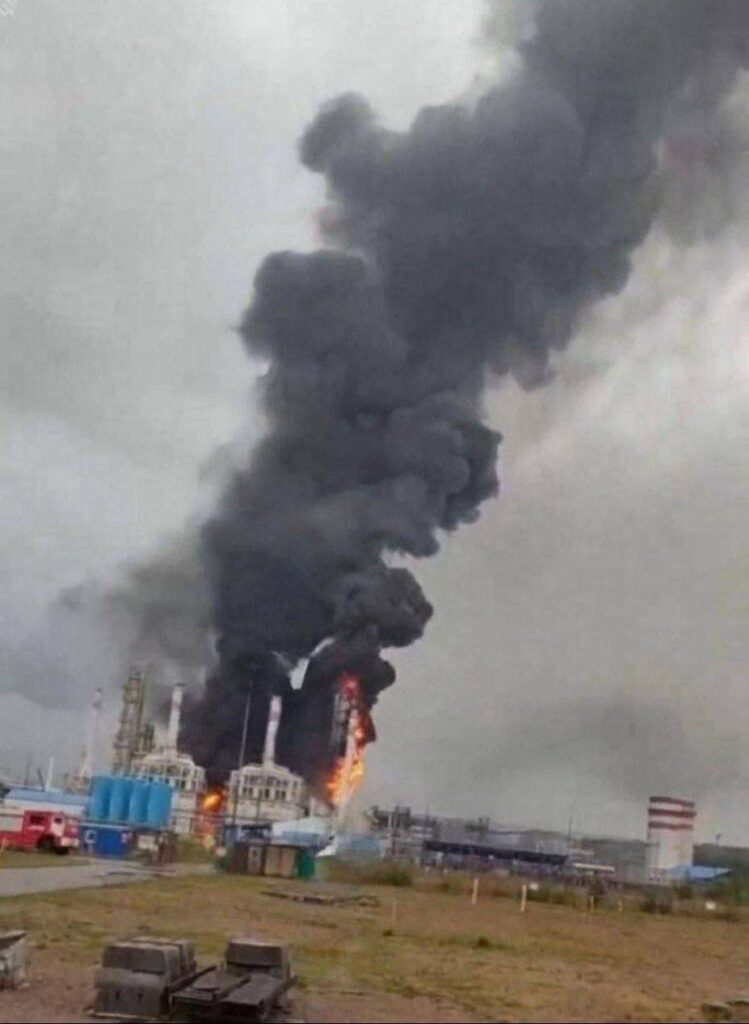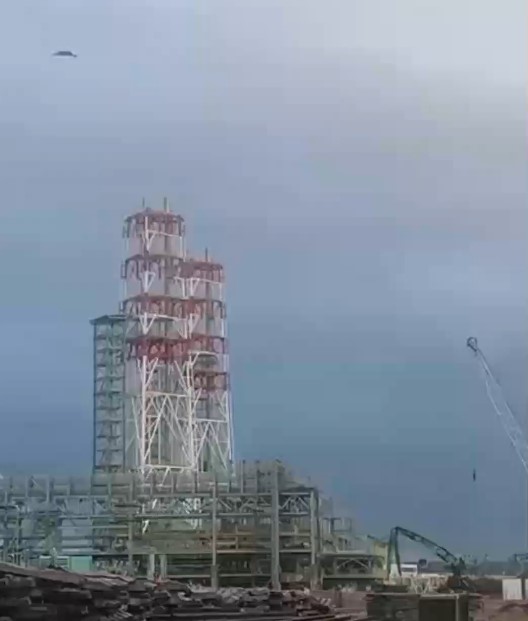Drone strike reported at Russian oil refinery 1400 km from Ukraine
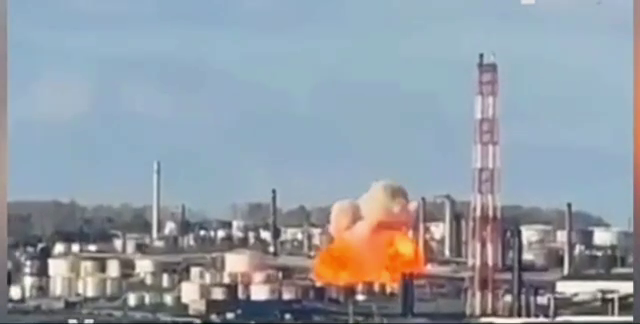
Footage circulating on Russian social media on Saturday suggests that Ukrainian long-range drones have struck the Novo-Ufa oil refinery in the Russian city of Ufa, Bashkortostan, nearly 1400 kilometers from the Ukrainian border.
The strike on Novo-Ufa marks one of the deepest drone attacks inside Russian territory since the full-scale invasion of Ukraine began.
According to local Telegram channels, an explosion was recorded at the refinery at around 13:30, allegedly caused by drone impact.
Eyewitness footage appeared to show flames at the site as well as a drone flying over one of Ufa’s neighborhoods.
By evening, the Head of the Republic of Bashkortostan, Radiy Khabirov, confirmed that the Novo-Ufa refinery had been attacked by long-range drones.
Khabirov said security forces shot down a drone that crashed on the refinery grounds, sparking a fire and minor damage but no casualties. Another drone was later downed nearby, with the scale of its impact still under review.
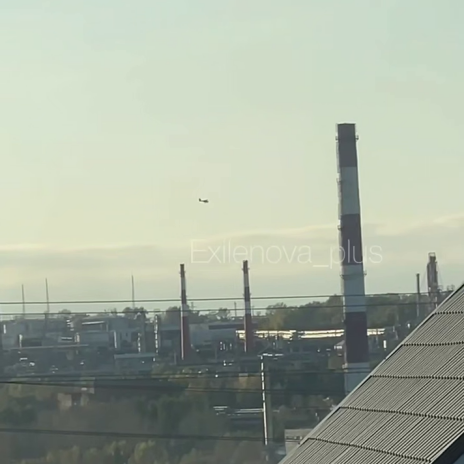
Earlier in the day, Russian media, citing the aviation agency Rosaviatsia, reported that temporary flight restrictions were introduced at Ufa Airport at about 14:20. The reason was not officially disclosed.
The Novo-Ufa refinery, operated by Russian oil company Bashneft, is one of three major oil processing facilities in Ufa. Together, they form a refining hub with an output exceeding 20 million tons annually. Novo-Ufa alone is estimated to have a capacity of 7.5 million tons of crude oil per year.
This is not the first reported drone strike at the complex. In March, Ukrainian drones allegedly struck the nearby Orgsintez plant, part of the same refining cluster, sparking explosions and a large-scale fire.
As of now, Ukrainian authorities have issued no official statement confirming an attack on the Novo-Ufa refinery.
Read also
-
Frontline report: Ukraine’s 1,400km drone strike on Russia’s Ufa oil refinery proves no target is safe west of Urals
-
Frontline report: 50% of Moscow’s fuel supply at risk after Ukrainian drone strike on its largest oil refinery
-
How Ukraine can win, p.2: The single drone target that could cripple Russia’s oil empire
